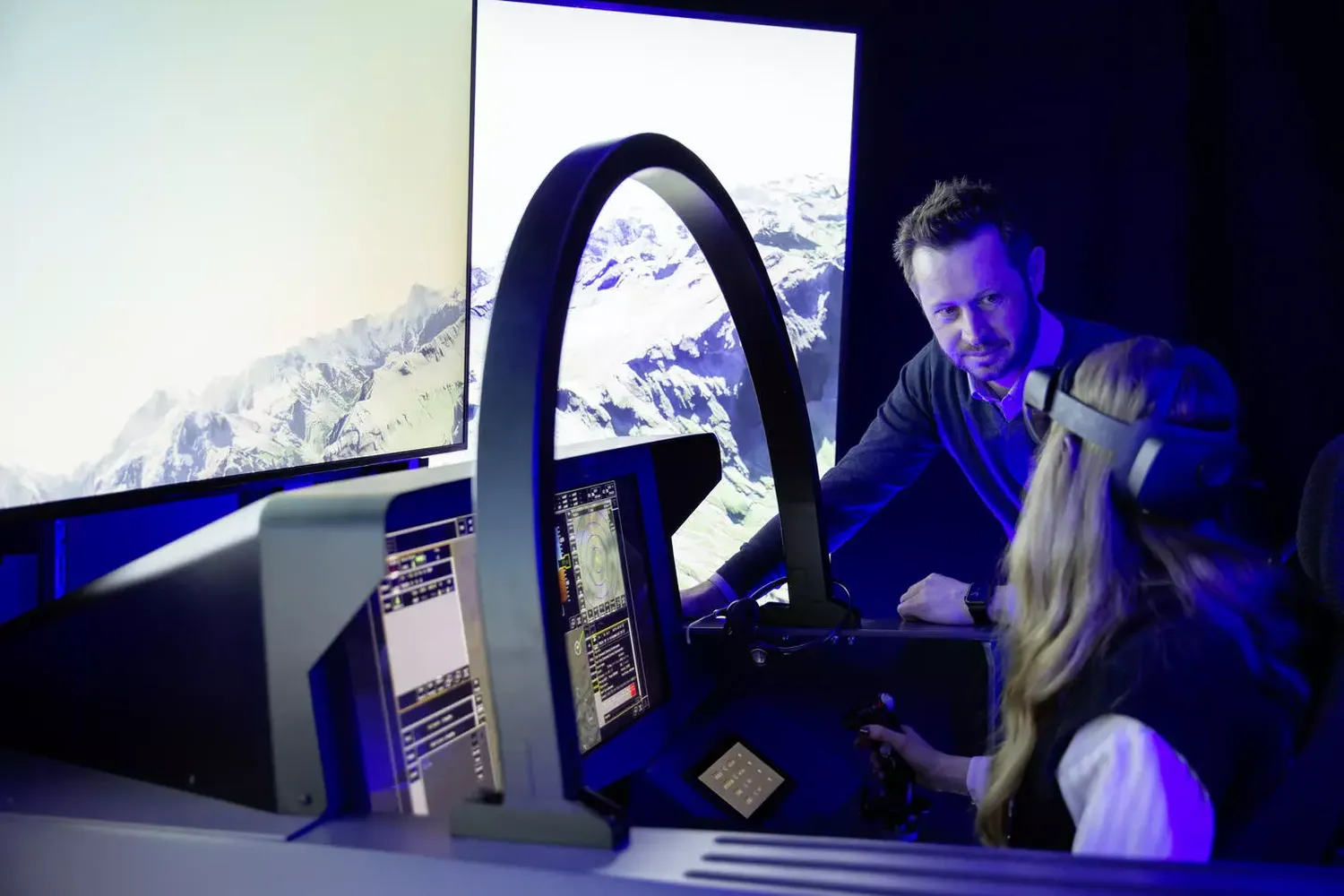Airbus shows how it is working on the development of FCAS, the next generation European air combat system.
Airbus unveiled some of the new features and technologies it is evaluating for implementation on the FCAS program’s next-generation fighter.
A Franco-German-Spanish Airbus team is testing new technologies and operational concepts for the Future Combat Air System (FCAS) at the company’s FCAS Prototyping Laboratory (FPL) in Manching, near Munich.
The FCAS will revolve around a next-generation weapon system (NGWS). In this «system of systems,» a next-generation fighter (NGF, whose development is led by Dassault) will work together with remote carriers (RC, development led by Airbus) and will be connected to other systems in space, in the air, on the ground, at sea and in cyberspace, via a data link and a mission services cloud. All these capabilities should be available by 2040, when the FCAS weapon system will begin to replace fighters such as the Eurofighter or Rafale.
What is Airbus working on?
Airbus is currently developing a new touch-screen human-machine interface that allows it to assign tasks to a swarm of drones (the remote carriers), and an augmented reality system that displays information such as reconnaissance and other mission participant data, as well as the status of the remote carriers, to which its aircraft is connected through a data cloud called the «Combat Cloud.»
Five years to demonstrator’s first flight
After much comings and goings, Demonstration Phase 1B is now in full swing: by 2025 the FCAS flight demonstrators should have been perfected. Demonstration Phase 2 will see them take off for the first time: the Remote Carrier demonstrator will fly in 2028 and the next-generation fighter demonstrator in 2029. The production phase is scheduled to begin in the 2030s.

Including the FPL team, Airbus currently has 250 people working on FCAS and expects to have 800 by the end of 2023. «We want to fill the new positions with both internal and external candidates,» said Bruno Fichefeux, head of the FCAS program at Airbus, adding that 80% of them will work in engineering.
On the Airbus side, the jobs will mainly take place on four plateaus or integrated work areas: in Manching, focused on the next-generation fighter, remote carriers and stealth technologies; in Getafe, near Madrid, where work is being done on the next-generation fighter and stealth technologies; in Friedrichshafen, near Lake Constance, where work is being done on the combat cloud and remote carriers; and in Elancourt, near Paris, where teams are working on the global system of systems and the combat cloud.
Pillars of development
Work among FCAS program partners in the Phase 1B demonstration phase is divided into individual pillars (see infographic), each of which has a lead company with partners, according to the «best athlete» principle. Airbus, for example, is responsible for Remote Carrier, combat cloud and stealth technologies. There will also be a plateau in Saint-Cloud (France), where Dassault Aviation will lead especially the new-generation fighter pillar, together with Airbus as lead partner.

A question of strategic autonomy
Why does Europe need its own system, and why not buy an existing one, for example from the United States? «Firstly, there is no system yet that meets all the requirements,» explains Fichefeux. Second, it’s about nothing less than European autonomy: «Our air forces need to be able to operate where and when they think it’s strategically important, without black boxes in between. Not having that capability would be a tremendous loss of sovereignty.»
Simulation of concepts and new technologies
From the FCAS Prototyping Laboratory (FPL) in Manching, the German team is executing a simulated combat against an enemy air defense installation. But they are not flying alone, as they are connected to their Spanish colleagues in Getafe, where they have another FCAS laboratory simulator.

In the simulation, the two new-generation fighter jets are supported by unmanned actives and intelligent algorithms, all connected by a powerful network system. The mission ends in success, and the exercise ends, leaving new lessons and raising new issues.
“Each exercise generates new ideas, matures concepts and provides hands-on experience of what a future digital engineering process might look like to maximise the system”, explains Johannes Horn, Chief Engineer of FCAS Simulation and Virtualization


Comentarios
Para comentar, debés estar registrado
Por favor, iniciá sesión